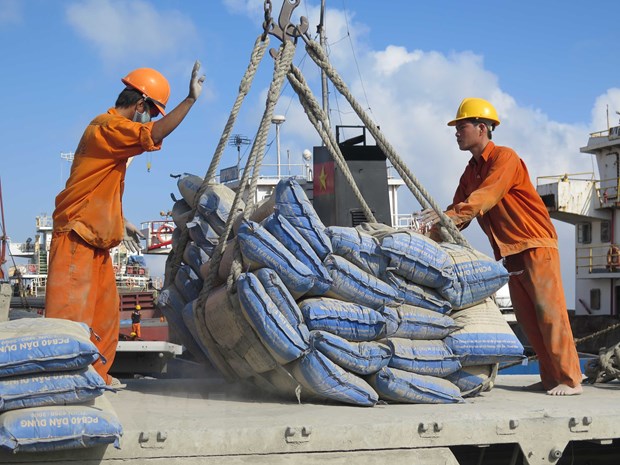
HÀ NỘI — Vietnamese cement producers have increased prices this month in the wake of a price hike of raw materials and input costs.
Prices of raw materials and input costs of the cement production industry such as electricity, coal, oil and gypsum have increased sharply, causing the industry’s production costs to surge. Oil prices in the first nine months of this year alone increased by 24.1 per cent over the same period last year.
Despite efforts to reduce costs and increase efficiency in production to offset the price hike of raw materials and input costs, cement producers have to adjust up sale prices by VNĐ50,000-100,000 per tonne depending on the product.
Hoàng Long Cement Joint Stock Company increased the price of all kinds of cement including PCB30 and PCB 40 by VNĐ80,000 per tonne from October 20.
The prices of Vicem Bút Sơn Cement Joint Stock Company and Tân Thắng Cement Joint Stock Company have also risen by VNĐ80,000 per tonne while the rate of Long Sơn Cement Company is VNĐ90,000 per tonne.
After the price hike in the first half of this year, cement producers in the central and southern regions this month announced increases to prices in October and November 2021.
From October 21, a tonne of cement of Công Thanh Cement Trading Company Limited in the central region increased by VNĐ70,000.
Vicem Hoàng Mai Cement Joint Stock Company has also announced it would increase its selling price by VNĐ50,000 per tonne for all types of cement in Đà Nẵng, Quảng Nam, Bình Định, Gia Lai, Kon Tum, Đắk Lắk, Phú Yên, Ninh Thuận, Bình Thuận and Khánh Hòa starting from October 25.
The sale of Vietnamese cement products reached 77.5 million tonnes in the first nine months of 2021, up 3.5 per cent year-on-year amid the COVID-19 pandemic which had negative impacts on many other industries.
Of the total, export volume was 31.9 million tonnes, up 19 per cent thanks to buying rebound seen in many large export outlets such as the US, Canada and China. State-owned Vietnam Cement Industry Corporation alone exported 14.5 million tonnes of cement, accounting for 45 per cent of the national cement exports.
Việt Nam is currently the fifth biggest cement manufacturer in the world, after China, India, the US, and Russia. Its cement output has doubled within 10 years, from 45.5 million tonnes in 2009 to about 100 million tonnes, turning the country from a cement and clinker importer to the world’s largest exporter of these commodities.
Last year, the country shipped 101.5 million tonnes of these products to overseas markets, representing a rise of 1.5 per cent over 2019.
However, in order to maintain exports, cement producers should apply advanced technologies in production to enhance quality and added value while reducing environmental harm, which would significantly help boost competitiveness, experts suggested.
They should also monitor the cement market and adjust their production plans accordingly to keep prices from falling. In addition, cement firms should also work out long-term development strategies. — VNS
Xem thêm: lmth.stsoc-tupni-gnisir-dima-secirp-elas-esaercni-srecudorp-tnemec/0399601/ymonoce/nv.swenmanteiv